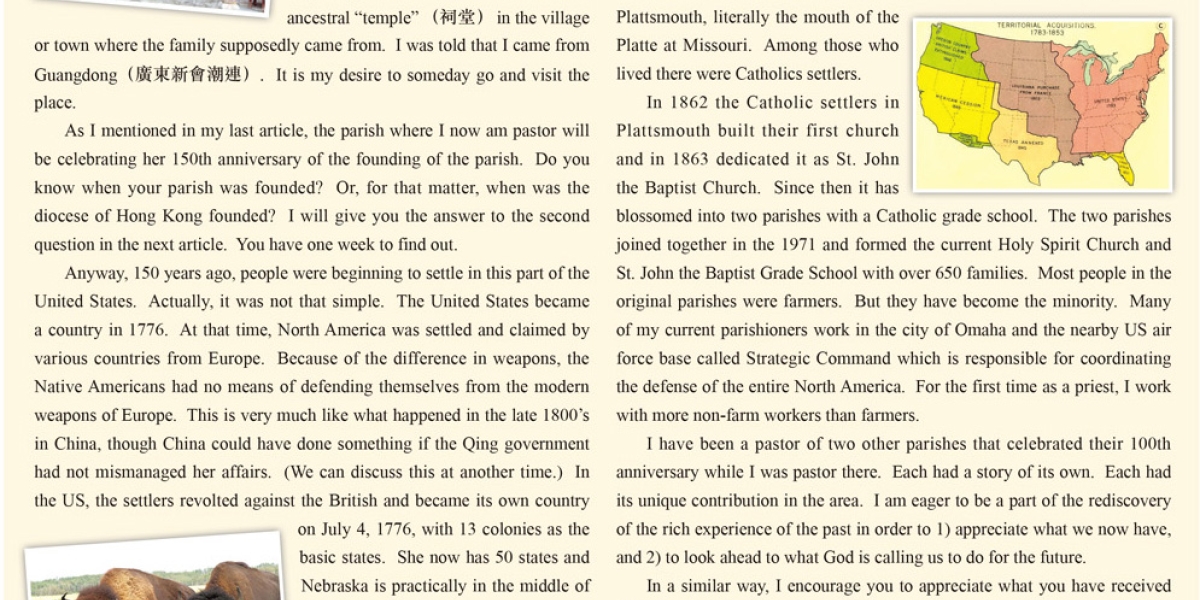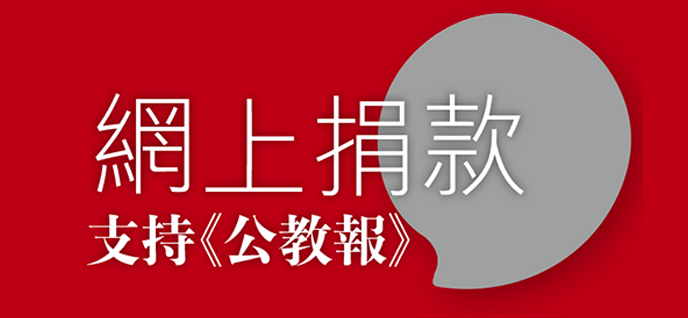
Family History
Have you ever traced the history of your family back a few generations? In our Chinese culture, there was a practice of placing the names of the children in the ancestral “temple” (祠堂) in the village or town where the family supposedly came from. I was told that I came from Guangdong(廣東新會潮連). It is my desire to someday go and visit the place.
As I mentioned in my last article, the parish where I now am pastor will be celebrating her 150th anniversary of the founding of the parish. Do you know when your parish was founded? Or, for that matter, when was the diocese of Hong Kong founded? I will give you the answer to the second question in the next article. You have one week to find out.
Anyway, 150 years ago, people were beginning to settle in this part of the United States. Actually, it was not that simple. The United States became a country in 1776. At that time, North America was settled and claimed by various countries from Europe. Because of the difference in weapons, the Native Americans had no means of defending themselves from the modern weapons of Europe. This is very much like what happened in the late 1800’s in China, though China could have done something if the Qing government had not mismanaged her affairs. (We can discuss this at another time.) In the US, the settlers revolted against the British and became its own country on July 4, 1776, with 13 colonies as the basic states. She now has 50 states and Nebraska is practically in the middle of the whole country.
In the area where I live, it was the Wild West where the buffaloes roamed. The territory was sold by the French to the United States in 1803 in what was called the Louisiana Purchase. The country began to settle and to develop the land west of the Missouri. It was this westward push that led to the European settlement at the confluence of the Platte and Missouri River and was named Plattsmouth, literally the mouth of the Platte at Missouri. Among those who lived there were Catholics settlers.
In 1862 the Catholic settlers in Plattsmouth built their first church and in 1863 dedicated it as St. John the Baptist Church. Since then it has blossomed into two parishes with a Catholic grade school. The two parishes joined together in the 1971 and formed the current Holy Spirit Church and St. John the Baptist Grade School with over 650 families. Most people in the original parishes were farmers. But they have become the minority. Many of my current parishioners work in the city of Omaha and the nearby US air force base called Strategic Command which is responsible for coordinating the defense of the entire North America. For the first time as a priest, I work with more non-farm workers than farmers.
I have been a pastor of two other parishes that celebrated their 100th anniversary while I was pastor there. Each had a story of its own. Each had its unique contribution in the area. I am eager to be a part of the rediscovery of the rich experience of the past in order to 1) appreciate what we now have, and 2) to look ahead to what God is calling us to do for the future.
In a similar way, I encourage you to appreciate what you have received and pray that God will direct you to do your part for the future generations that will come after you. “When much is given, much will be asked of you.” (Lk. 12:48).






